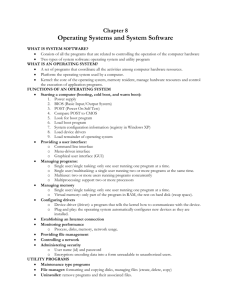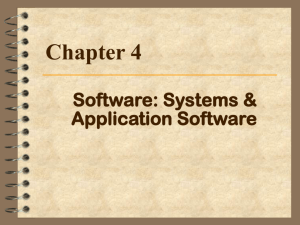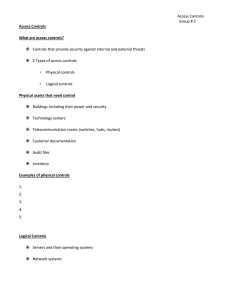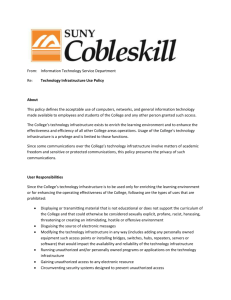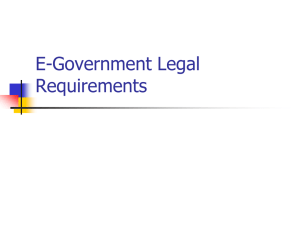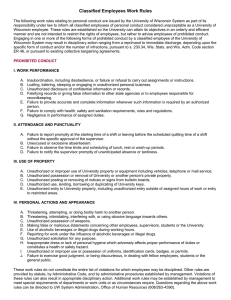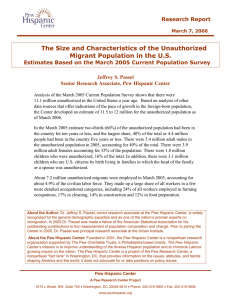Document
advertisement
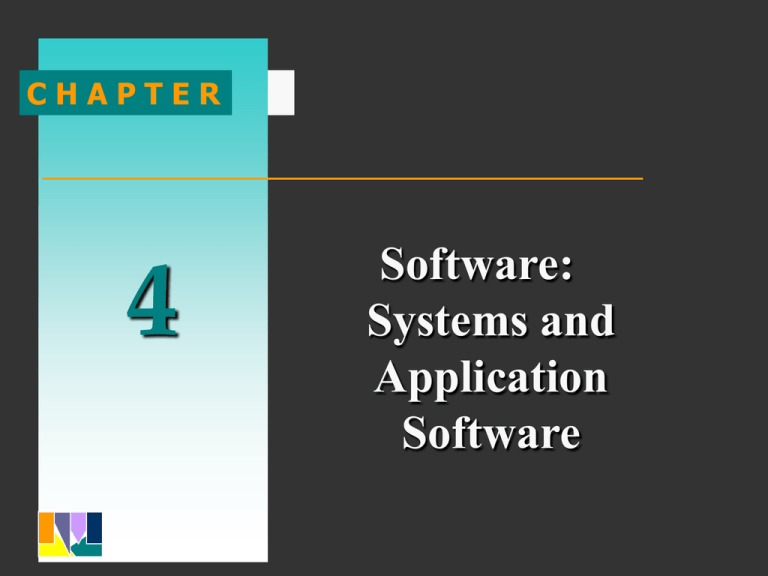
CHAPTER 4 Software: Systems and Application Software 4 1 Software and Hardware (Figure 4.1) • Software is a critical piece of making computers perform. • Computer Programs Sequences of instructions for the computer • Classes of software Systems Software Application Software 4 Software vs. Hardware Costs 2 Software Classes • Systems Software Set of programs that coordinates activities and functions of the hardware and various other programs. • Application Software Programs that help users solve particular computing problems. 4 3 Spheres of Influence and Software Sphere of influence The scope of the problems and opportunities addressed by a particular organization. Two or more people who work together to achieve a common goal. Workgroup Personal 4 Information systems that serve the needs of an individual user. Enterprise Information systems that support the firm in its interaction with its environment 4 Spheres of Influence and Software Systems that support information sharing, group scheduling, group decision making, and conferencing Workgroup Examples of software Personal Word processing, spreadsheets, databases, e-mail Enterprise Order entry, billing, applications 4 5 Classifying Software by Type and Sphere of Influence (Table 4.1) 4 6 Software Issues and Trends 4 • Software Licensing Protection by software vendors to prevent unauthorized use. • Software Upgrades A revised version of software that usually includes fixes of known problems, plus enhancements to existing capabilities. • Global Software Support Software that is distributed around the globe may require unique support mechanisms due to local political and economic conditions. 7 Role of Systems Software (Figure 4.2) • Role of System Software An interface or buffer between application software and hardware. • Operating Systems Control the computer hardware and act as an interface with applications programs. 4 8 Operating System Functions Operating System Functions 4 Perform common computer hardware functions Provide a user interface Provide a degree of hardware independence Manage system memory Manage processing tasks Provide networking capability Control access to system resources Manage files 9 User Interface 4 • User Interface A function of the operating system that allows individuals to access and command the computer. • Command-Based User Interface A particular user interface that requires text commands be given to the computer to perform basic activities. • Graphical User Interface (GUI) A user interface that uses pictures (icons) and menus displayed on the screen to send commands to the computer system. 10 Advantages of Using a Graphical User Interface (Table 4.2) Table 4.2 4 11 Systems Software Concepts • Hardware Independence Operating systems (OSs) provide hardware independence for application software. The application software interfaces with the operating system which interfaces with the hardware. When the hardware is changed, the operating system is changed so that the application software is not required to be changed. 4 Application Application OS OS OS Hardware Hardware 12 Software Concepts (Figure 4.3) • Memory Management Controls how memory is accessed and maximizes available memory and storage. 4 13 Software Concepts • Virtual Memory Memory that allocates space in secondary storage to supplement the immediate, functional memory capacity of RAM. • Paging A function of virtual memory that allows the computer to store currently needed pages in RAM while the rest of these programs wait in secondary storage. (Figure 4.4) 4 14 Software Concepts 4 • Multitasking A processing activity that allows a user to run more than one application at the same time. • Multithreading A processing activity that is basically multitasking within a single application. • Time-sharing A processing activity that allows more than one person to use a computer system at the same time. 15 Software Concepts 4 • Network capability Aids in connecting the computer to a network. • Access to system resources Provides security for unauthorized access. • File management Ensures that files in secondary storage are available when needed, and they are protected against unauthorized usage. 16 Popular Operating Systems (Table 4.3) (Table 4.3) 4 17 Utility Programs (Table 4.4) • Utility Programs Programs used to merge and sort sets of data, keep track of computer jobs being run, compress files of data before they are stored or transmitted over a network, and perform other important tasks. 4 Examples of Utility Programs 18 Types of Application Software 4 • Proprietary Software Designed to solve a unique and specific problem. In-House Developed Development of application software using the company’s resources. Contract Software Developed for a particular company. • Off-The-Shelf Software An existing software program that can be used without considerable changes expected. 19 Sources of Software • Customized Package Blend of external and internal software development. In-House Customized Contract Customization 4 20
